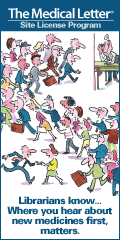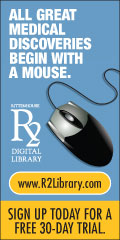

MLA Position Statements and FAQs
Medical Library Association Copyright Management Guidelines
 Introduction
Introduction
Copyright management, including interpretation of the scope of fair use under the copyright law and arranging appropriate royalty payments, has become an increasingly important responsibility for health sciences librarians. Institutional guidance is often sought from librarians related to general institutional copying, library copying, and special purpose copying for inservice training, continuing medical education activities, journal clubs, and other activities. The focus of these guidelines is primarily on copying of paper materials, but the basic principles also apply to reproduction of digital materials.
MLA Copyright Management Guidelines is intended as a practical guide and should not be used in place of sound legal advice. The guidelines do not purport to be a legal statement. Because of the nature of the subject matter, in which legal rights and liabilities often are dependent upon the specific facts and circumstances involved, readers are encouraged to consult with competent legal counsel as appropriate.
 Rights and Responsibilities
Rights and Responsibilities
- Section 107 of the United States federal copyright statute codifies the conditions under which copying is considered to be fair use and not an infringement of copyright. For example, individuals may, under certain circumstances, make copies of copyrighted materials for criticism and news reporting, for their own scholarship, and for research. Section 108 further clarifies the exemptions as they apply specifically to library copying. Publishers and producers may not unilaterally restrict exemptions in Section 107 and 108 of the Copyright Law. Fair use rights, however, may be overridden by specific licensing agreements, including agreements with rights management organizations.
- The National Commission on New Technological Uses of Copyright Works (CONTU) Guidelines provide specific guidelines (e.g., the "Rule of Five") to help librarians determine how much copying may be done within the scope of fair use for interlibrary loan, library reserves, and classroom use. While the CONTU Guidelines are not part of the law, they are referenced with approval in the legislative history, and librarians should follow the CONTU Guidelines when establishing policies and procedures for library copying.
- Any copying that is done by the institution in circumstances that cause the institution to question whether either of the Section 107 and Section 108 exemptions apply potentially constitutes an infringement of copyright, and the institution has a legal responsibility to insure that appropriate permissions are secured and, if required, royalties are paid.
 Beyond Fair Use: Options for Copyright Management
Beyond Fair Use: Options for Copyright Management
The fair use provisions of the Copyright Law are expansive and vitally important to the library community. These provisions support resource sharing through interlibrary loan and other important library services. When librarians have evaluated the four factors provided in Section 107 of the law to determine whether the reproduction of copyrighted materials constitutes fair use [1], and have concluded that the situation would not likely be deemed a fair use, there are a number of copyright management options, including:
- obtaining permission and making payments directly to the copyright owner (typically the publisher or author); and
- obtaining permission and making payments indirectly to the copyright owner through a third party that already has secured the applicable rights for sublicensing, e.g., (a) from document delivery services such as ISI Document Solution, BioMed Net, and Carl Uncover; and (b) from rights management organizations such as the Copyright Clearance Center, Inc. (CCC) and others that provide licensing systems for the reproduction and distribution of copyrighted materials.
Some options may offer librarians the opportunity to establish transactional or blanket licensing agreements. Transaction reporting services are designed to help libraries report copying that goes beyond fair use, and with a single payment, insure that royalties are distributed to the appropriate rights holders. Blanket licenses may eliminate transaction record keeping; however, librarians must insure that fair use is protected and not overlooked or overidden by the licensing agreement. A joint library association statement, Principles for Licensing Electronic Resources, provides a checklist of principles that librarians should consider when negotiating license agreements.
 Choosing a Copyright Management Option
Choosing a Copyright Management Option
All of the methodologies mentioned above offer librarians viable options for managing the reproduction of copyrighted materials that fall outside the scope of fair use. Choosing the best option will depend on the nature and volume of copying done. Large institutions with diverse copying needs ranging from multiple coursepacks for the university's medical school to extensive electronic reserve collections will undoubtedly want to investigate rights management companies. Other institutions in which incidental copying is done for the occasional journal club may find it more efficient and cost-effective to employ other management options.
- Rights management companies such as the Copyright Clearance Center, Inc. (CCC) provide a variety of services to assist libraries in managing copyright and paying appropriate royalties when copying exceeds the fair use guidelines. For publishers registered with a rights management company, an appropriate transaction fee can be paid to allow a variety of uses such as production of print and electronic coursepacks and reserves, and distributing copyrighted materials in newsletters and on Internet sites.
- Retention of the fair use protections of the Copyright Law is an important
consideration when reviewing the license agreements with rights management
organizations:
- Does the langauge of the license exempt fair use copying, or does it override the fair use provisions of the Copyright Law? and,
- Does the method of estimating the amount of copying in the institution effectively take into account copying that meets the fair use guidelines?
- In situations where occasional copying falls outside the scope of
fair use, librarians may find it efficient to request permission directly
from the publisher or author and make royalty payments directly to the
rights holder. The written permissions request to reproduce a copyrighted
work normally includes the following information:
- Exact title, author and/or editor, and edition of the item to be duplicated;
- For text materials--page numbers, chapter numbers, and possibly a photocopy of the beginning of the portion to be used; for visuals--specify frame numbers
- If transferring materials into another format, give the reasons for the change
- Number of copies to be made; and
- Whether the use is limited for specific time periods, and the form of distribution and disposal (e.g., reserve collection, classroom). [2]
- Fee-based document delivery services such as ISI Document Solution, UnCover, and BioMed Net, provide access to copyrighted works such as current journal articles, conference proceedings and papers, book chapters, government reports, annual reports, standards, and monographs. These companies provide online listings of holdings, and offer clients delivery of full-text through a variety of routes including fax, e-mail, etc. Services include royalty payments to rights holders and may offer an efficient alternative to other copyright management options.
 Digital Millennium Copyright Act (DMCA)
Digital Millennium Copyright Act (DMCA)
Passage of the DMCA ![[PDF]](https://webarchive.library.unt.edu/eot2008/20090116025839im_/http://www.mlanet.org/common/img/software/adobe-pdf.gif) in 1998 has raised many questions for librarians. It is important to remember
that the DMCA applies primarily to specific conditions regarding copyright
of materials that are produced and disseminated through electronic media.
It does not supersede the copyright law, which remains format neutral.
While many uncertainties remain in the electronic realm, the rules governing
copying of print remain stable. Fair use principles and the CONTU guidelines
are clear.
in 1998 has raised many questions for librarians. It is important to remember
that the DMCA applies primarily to specific conditions regarding copyright
of materials that are produced and disseminated through electronic media.
It does not supersede the copyright law, which remains format neutral.
While many uncertainties remain in the electronic realm, the rules governing
copying of print remain stable. Fair use principles and the CONTU guidelines
are clear.
Librarians have always been at the pivotal point of copyright, and must continue to exercise leadership in this area to insure that appropriate permissions are secured from and, if appropriate, royalties are provided to rights holders, while protecting the fair use principles that are crucial to the advancement of scholarship and knowledge.
 References
References
[1] Medical Library Association. The copyright law and the health sciences librarian. Chicago, 1989:A-1.
[2] Medical Library Association. The copyright law and the health sciences librarian. Chicago, 1989:8.
 Web Resources
Web Resources
Librarians may find additional information on copyright and intellectual property at the following Internet sites (alphabetical list):
- Cornell University Legal Information Institute, Copyrights
- MLA Resources on Electronic Licensing
- MLA position statements on copyright and fair use
- MLA activities and statements on the DMCA
- National Academy of Sciences, report on The Digital Dilemma: intellectual Property in the Information Age
- Stanford University Libraries, Copyright and Fair Use
- U.S. Copyright Office
- University of Michigan Institute of Continuing Legal Education intellectual property page
- University of Nebraska McGoogan Library, Copyright Resources
- University of Texas Copyright Crash Course FAQ
- Yale University Library, Copyright Resources Online
- Yale University Library, Licensing Digital Information
 Contributors
Contributors
T. Scott Plutchak, Editor, Bulletin of the Medical Library Association, and Director, Lister Hill Library, University of Alabama, Birmingham, AL.
Logan Ludwig, Ph.D., Chair-designate, MLA Governmental Relations Committee, and Associate Dean of Library and Telehealth Services, Loyola University Stritch School of Medicine Maywood, IL.
Lucretia W. McClure, MLA Copyright Referent, and Librarian Emerita, Edward G. Miner Library, University of Rochester Medical Center, Rochester, NY.
Mary M. Langman, Manager of Information Issues and Policy, Medical Library Association, Chicago, IL.
For further information, contact Mary Langman, 312.419.9094 x27.
Medical Library Association
312.419.9094
info@mlahq.org
© 1999-2008 Medical Library Association
Send site questions/comments to systems administrator
Last Updated: 2007 July 13
www.mlanet.org/government/positions/copyright_mgmt.html





